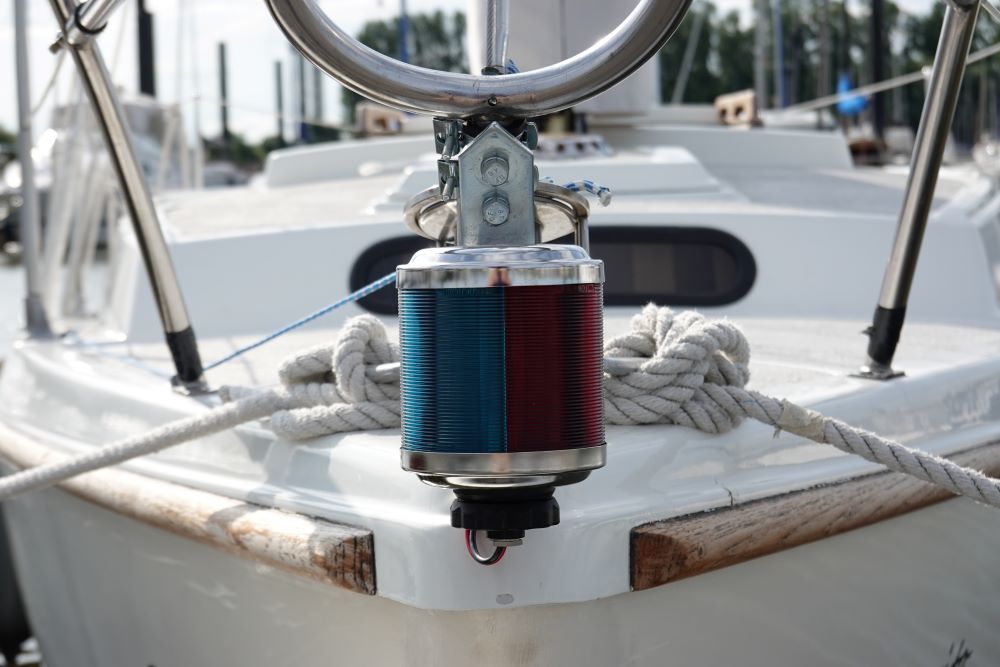
Port and Starboard: What They Mean and How to Remember
If you’re interested in boating, you’ve probably heard the terms port and starboard before.
Wondering what these words mean? You’ve come to the right place. In this article, the boating safety experts at the NBSS break down the meaning and origins of the terms, explain why they are so important, and provide a few tricks to help you remember which is which!
Port and starboard: terms meant to eliminate confusion
Left and right should never be used to indicate direction when boating. Port and starboard are used instead.
The main reason for this difference in vocabulary is to eliminate confusion, because port and starboard will remain consistent in terms of the side they indicate regardless of where you are on the ship.
To better understand what port and starboard represent, take a look at the illustration below.
In this image, port is indicated in red and starboard in green. The white part represents the stern.
Definition of port
When looking towards the bow (front), port is the left side of the boat. Port is usually associated with the colour red because that is the hue displayed by port side lights (which are one of the navigation lights that must be used in the dark and in conditions where visibility is reduced).
Definition of starboard
When looking towards the bow, starboard is the right side of the boat. Starboard is usually associated with the colour green because that is the hue displayed by starboard side lights.
The origins of port and starboard
The word starboard originated in the early days of boating. Before the invention of rudders on the centreline, boats were maneuvered using a steering oar. Since most sailors were right-handed, the steering oar would usually be located on the right side of the stern. This led to the right side being called the steering side. Two Old English words were combined to form the term starboard: stéor, meaning “steer”, and bord, meaning “side of the boat”.
Since the steering oar was usually on the right, it was much easier to dock boats on the left. That meant that the left side was facing the port, which eventually led to it being called the port side.
The importance of understanding port and starboard
There are many reasons why it’s important to learn to use port and starboard.
Firstly, port and starboard are the official designations for left and right on all vessels, as set forth in the International Regulations for Preventing Collisions at Sea. The treaty establishes strict rules that must be followed by all vessels in order to prevent collisions and other incidents on the water.
The terms port and starboard are also useful when communicating with other vessels. For example, instead of saying that one ship is passing another on the right or left, the terms port and starboard should be used instead for clarity. Using these terms can also help crews react more quickly and efficiently in the event of an emergency.
If an accident occurs and legal action is taken, any captain or officers who are found guilty of using the terms left and right to refer to a vessel may be held responsible for the damages if the mistake is found to have led to the accident. Therefore, it’s essential to always use the correct technical terms to refer to the sides of a vessel.
Since left and right can be ambiguous due to the lateral inversion of perspective, it’s important to always use the terms port and starboard when boating.
Port and starboard: tricks to remember which is which
There are a few different mnemonic devices that can help you remember the meanings of port and starboard:
- The words port and left both have four letters in them. If you can remember that port means left because they have the same number of letters, then you can extrapolate that starboard means right.
- Use the sentence “Is there any red port left in the bottle?” The sentence refers to port wine, which is red in colour. This mnemonic is particularly useful because in addition to indicating that port means left, it also reminds you of the colour associated with it.
Learn about boating with the National Boating Safety School
Knowing the meanings of port and starboard and how to use them is an indispensable part of boating safety.
Remember that you need to have your pleasure craft operator card with you at all times in order to boat legally on Canadian waters. You can get your card at any time of year by registering for our boater safety course.
Want to find out more about boating safety? The National Boating Safety School is a reliable resource. Our boat license study guide and blog are designed for pleasure boaters who are preparing to take their boating exam online or simply want to refresh their memory before heading out on the water.


